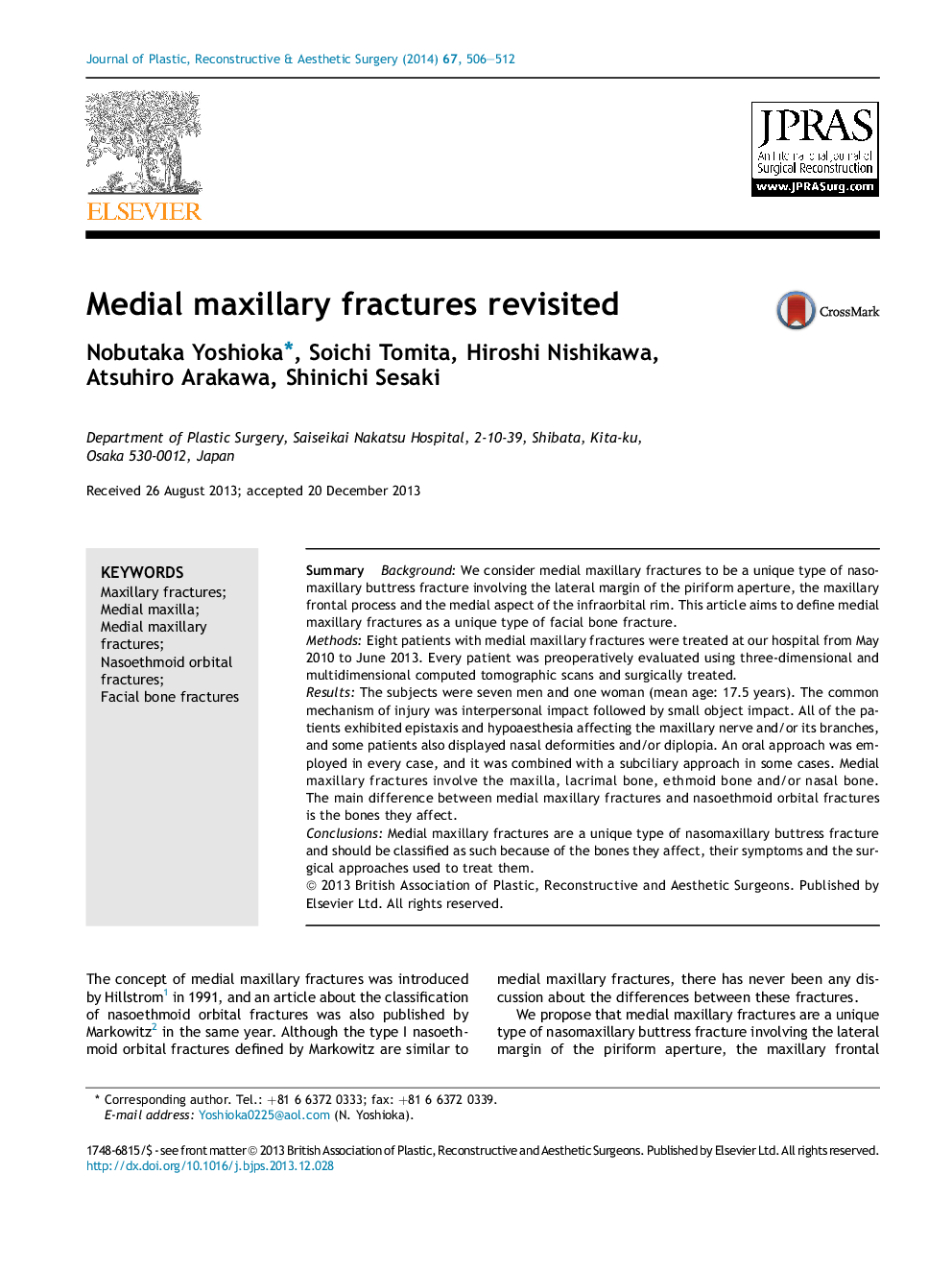| Article ID | Journal | Published Year | Pages | File Type |
|---|---|---|---|---|
| 4117879 | Journal of Plastic, Reconstructive & Aesthetic Surgery | 2014 | 7 Pages |
SummaryBackgroundWe consider medial maxillary fractures to be a unique type of nasomaxillary buttress fracture involving the lateral margin of the piriform aperture, the maxillary frontal process and the medial aspect of the infraorbital rim. This article aims to define medial maxillary fractures as a unique type of facial bone fracture.MethodsEight patients with medial maxillary fractures were treated at our hospital from May 2010 to June 2013. Every patient was preoperatively evaluated using three-dimensional and multidimensional computed tomographic scans and surgically treated.ResultsThe subjects were seven men and one woman (mean age: 17.5 years). The common mechanism of injury was interpersonal impact followed by small object impact. All of the patients exhibited epistaxis and hypoaesthesia affecting the maxillary nerve and/or its branches, and some patients also displayed nasal deformities and/or diplopia. An oral approach was employed in every case, and it was combined with a subciliary approach in some cases. Medial maxillary fractures involve the maxilla, lacrimal bone, ethmoid bone and/or nasal bone. The main difference between medial maxillary fractures and nasoethmoid orbital fractures is the bones they affect.ConclusionsMedial maxillary fractures are a unique type of nasomaxillary buttress fracture and should be classified as such because of the bones they affect, their symptoms and the surgical approaches used to treat them.
